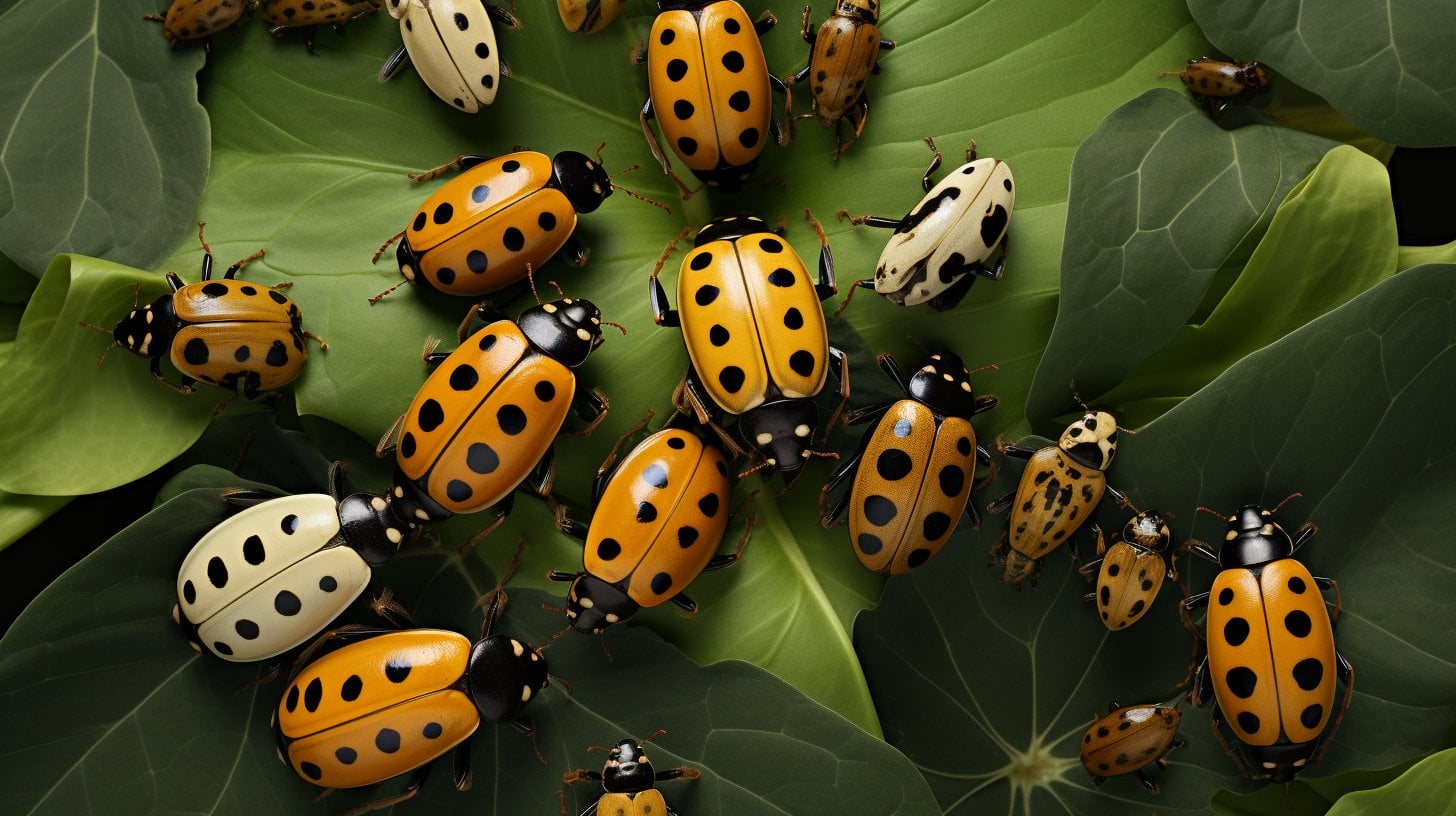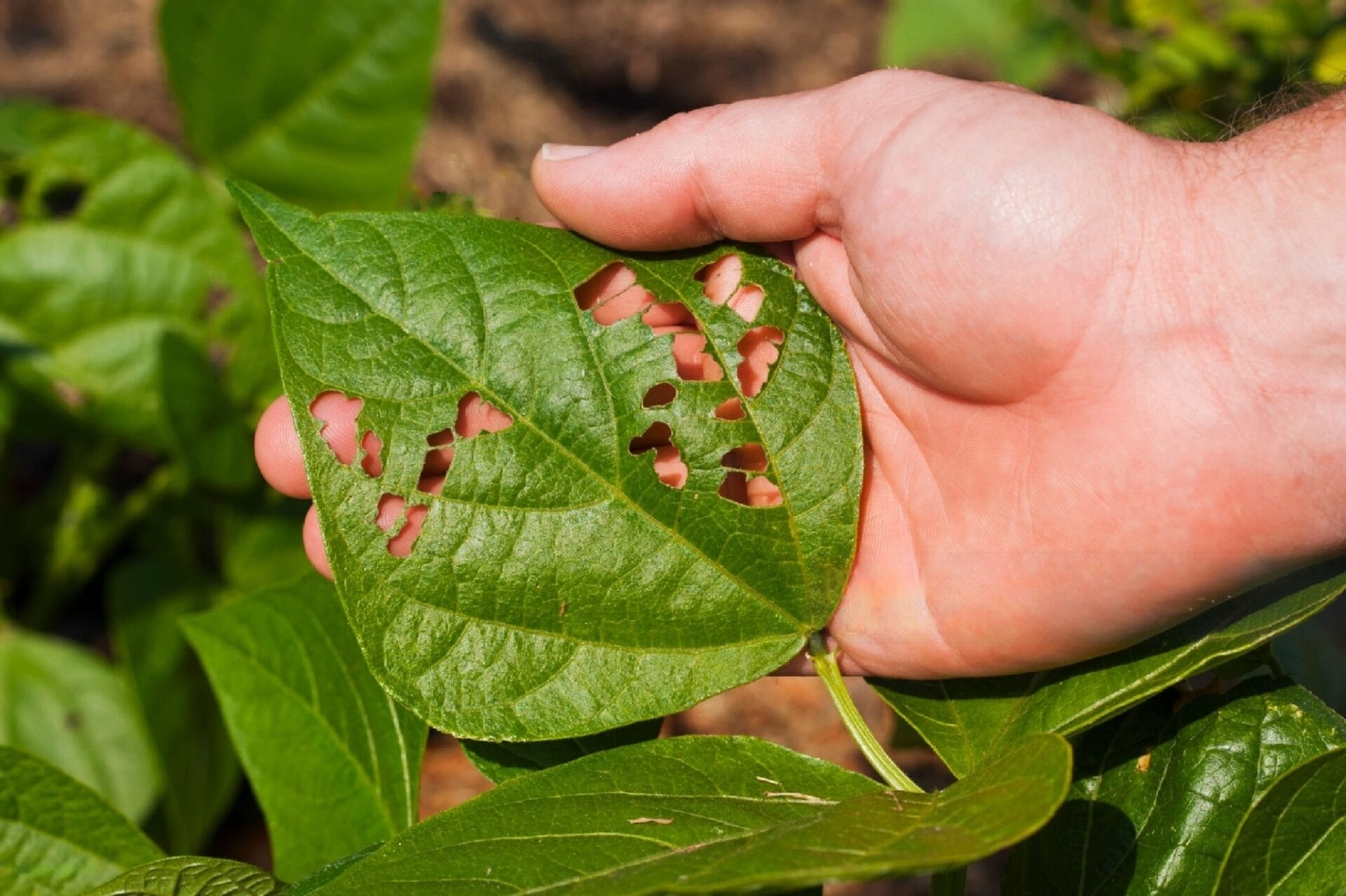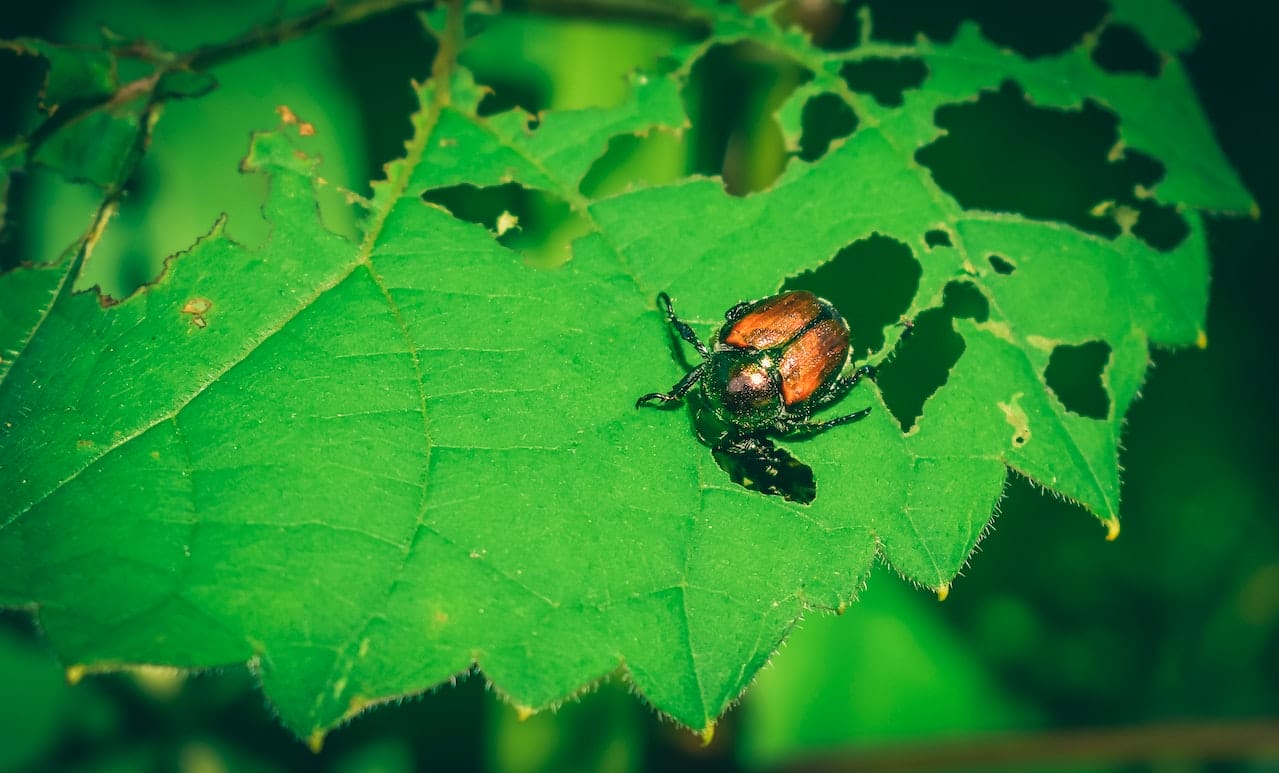How to Get Rid of Bean Leaf Beetle: Your Effective Guide
It can be extremely aggravating when my green bean plants fall victim to the destructive bean-leaf beetles. These pesky bugs can swiftly and effortlessly cause extensive damage to your flora. Therefore, knowing the strategies to eradicate bean leaf beetle is a crucial skill for having a thriving and fruitful garden.
So, I’ve put together this guide to help you identify, treat, and prevent these pesky bugs. Let’s reclaim our gardens together!
Key Takeaways
- Identifying and distinguishing them from similar pests is crucial for effective control.
- Understanding their life cycle and feeding habits can aid in managing and preventing infestations.
- Sustainable methods such as using neem/margosa oil, introducing beneficial insects, and employing organic pest control can effectively control these beetles.
- If insecticides are necessary, choosing the right type and timing the application is key for controlling beetle invasions while minimizing environmental harm.
Know Your Enemy: Identifying and Understanding the Bean Leaf Beetle

As a gardener, I’ve learned that it’s crucial to understand your foe.
The Bean Leaf Beetle, for instance, can wreak havoc on a crop if not properly identified and handled.
Let’s dive into their cycle of life, the damage they cause, and how to distinguish them from similar pests.
The Life Cycle of the Bean Leaf Beetle
I’m fascinated by its cycle from egg to adult.
Adult bean leaf beetles overwinter in leaf litter or other protective areas. When spring arrives, they emerge to feed and lay eggs on the undersides of leaves of beans.
After about a week, these eggs hatch into larvae. These larvae feed on the roots of the plant. This stage lasts around 3 weeks.
After this, the larvae pupate in the soil before maturing into adult beetles.
This is interesting because it’s a perfect example of how a single species can significantly impact its environment.
Understanding this is the first step towards managing it effectively.
Understanding the Damage Caused by Bean Leaf Beetles
It’s crucial to grasp the extent of damage that these tiny pests can inflict on our crops. Bean leaf beetles feed voraciously on leguminous plants, especially soybean plants, causing considerable beetle damage. The damage isn’t just cosmetic; these infestations can lead to significant crop losses if not checked promptly.
To understand and control these beetles better, let’s look at the common types of damage they cause, presented in the table below:
| Type of Damage | Description |
| Feeding Damage | They chew holes in leaves, leaving a characteristic lace-like appearance |
| Pod Damage | Leaf Beetles usually feed on plant pods, causing direct damage to the seeds and opening pathways for disease. |
| Overwintering Damage | Beetles also burrow into the soil and can damage the roots of young plants. |
Knowledge is power in the fight against these pests.
Differentiating Between Bean Leaf Beetles and Similar Pests
Now, let’s delve into how we can distinguish these damaging pests from other similar insects.
You see, differentiating these pests can be tricky. However, there are unique characteristics to look out for. They have four black spots on their backs. This is a distinctive feature that sets them apart.
Where these beetles are found can also help in identification. Bean leaf beetle populations thrive specifically in areas where beans and other legumes grow. If you spot beetles in such environments, chances are high that you’re spot on.
Recognizing Bean Leaf Beetle Infestation in Your Green Bean Plants

In my own experience, recognizing its infestation in green beans isn’t always straightforward. I’ve found it’s crucial to know the early signs of damage and understand how these beetles prefer to lay their eggs.
Additionally, I can’t stress enough the importance of acknowledging the risk of the Bean Pod Mottle Virus, a disease these pests can spread.
Early Signs of Bean Leaf Beetle Damage
I’ve noticed the early signs of damage on my plants, which include small round holes in the leaves. It’s clear that they have started their destructive path. Leaf beetle invasions can ruin your crop if not dealt with promptly.
| Signs of Damage | Emotional Impact |
| Small round holes | I feel devastated seeing my plants damaged. |
| Leaf discoloration | I feel anxious about losing my entire crop. |
| Wilting | I feel helpless, not knowing how to get rid of them. |
I’m eager to learn about beetle control strategies. I want to protect my plants and ensure their healthy growth. I need to act quickly and decisively to prevent further invasions and damage. I’m ready to take on this challenge and save my plants from these beetles.
Understanding How Bean Leaf Beetles Lay Eggs
Understanding how these pests lay eggs is my next step in protecting my plants. Knowing their lifecycle can help me disrupt it and prevent damage.
The process involves four steps:
1. They overwinter in the soil near the base of plants, hibernating during the cold months.
2. When spring arrives, they emerge and feed on the young foliage of plants.
3. After feeding, they lay their eggs in the soil near the base of the plant.
4. The eggs then hatch into larvae, which continue the cycle of life by feeding on the roots.
Acknowledging the Risk of Bean Pod Mottle Virus
There’s a real risk of Bean Pod Mottle Virus, which I can’t ignore in my fight to protect my plants. This virus, transmitted by bean leaf beetles, can wreak havoc on my garden. Pest control is crucial in managing beetle populations and reducing the chances of this virus spreading.
It’s not just about killing these pests; it’s also about controlling their numbers. Various control methods can be employed, from using pesticides to biological control techniques.
It’s a constant battle, but I’m confident I can keep my garden safe from the Bean Pod Mottle Virus with proper vigilance and timely intervention. After all, my plants’ health is worth every effort.
Sustainable Methods On How to Get Rid of Bean Leaf Beetle Naturally

Now that we’ve identified the issue, let’s delve into some sustainable solutions for naturally ridding your garden of these beetles.
I’m excited to explore the power of neem oil, the role of beneficial insects, and the use of non-toxic, eco-friendly pesticides.
It’s time to reclaim our green beans without harming our planet.
The Power of Neem Oil in Bean Beetle Control
I’ve found that this oil can be incredibly effective for controlling bean beetles in my garden. It’s a safe insecticide that implements organic pest management.
Here’s why I consider it a top choice:
1. They hate it: Neem oil disrupts their life cycle, preventing them from growing and multiplying.
2. Safe for plants: Unlike harsh chemical pesticides, this oil doesn’t harm my beans or other plants.
3. Environmentally friendly: It’s a natural product, making it a perfect fit for organic control methods.
4. Versatile: Beyond beetles, this oil works against various garden pests.
Beneficial Insects: Natural Predators of Bean Leaf Beetles
In addition to neem oil, I’m also a huge fan of using beneficial insects as natural predators in my garden. These helpful critters can help control its population, reducing the damage these pests can cause.
Ladybugs, lacewings, and spiders are just a few examples of beneficial insects that are natural predators. They feast on the larvae and eggs, preventing them from maturing into adults. By introducing these insects into my garden, I’ve seen a significant decrease in pests.
Exploring Non-Toxic and Eco-Friendly Pesticides
Exploring non-toxic and eco-friendly pesticides is next on my agenda, as they’re another great way to manage pests without harming the environment. Particularly, I’m interested in controlling bean leaf beetles, which can wreak havoc where soybeans are grown.
Here are some organic methods that may help:
1. Neem oil: This natural pesticide interferes with the beetles’ life cycle and feeding patterns.
2. Diatomaceous earth: This non-toxic substance can kill beetles by dehydrating them.
3. Garlic spray: A potent repellent, this keeps them at bay.
4. Beneficial insects: Introducing predators can control the populations effectively.
The Role of Insecticides in Bean Leaf Beetle Control

While natural methods can be effective, sometimes it’s necessary to resort to pesticides for controlling bean leaf beetles. I’ve found that the key is choosing and using the right product correctly.
But remember, we’ve got to balance this with our responsibility to keep the environment safe.
Choosing the Right Insecticide for Bean Leaf Beetle Infestation
I’ve been researching different pesticides to find the most effective one for an infestation. Understanding that these beetles can cause significant damage if not controlled properly is important. That’s why choosing the right one is critical.
Here are the top four I’ve found:
1. Pyrethroid-based: These insecticidal compounds are highly effective.
2. Carbamate: These can also control invasions but may require repeated applications.
3. Organophosphate: These are potent but must be used carefully due to their toxicity.
4. Neonicotinoid: The plant absorbs These systemic pesticides, making them a long-lasting option.
Effective Application of Insecticides for Optimal Results
Once we’ve selected the right insecticide, it’s critical to understand the most effective ways to apply it for optimal results.
The first step is to pay attention to timing. Bean leaf beetles may be a common garden pest, but they have two generations yearly. It’s best to apply this when we first spot the first-generation beetles.
But don’t forget about the bean leaf beetle larvae. These pests live in plant debris and can survive the winter. So, a fall cleanup is crucial to eliminate potential hiding and breeding spots.
Remember, the key to the effective application of pesticides for optimal results is a combination of good timing and thorough follow-up care.
Let’s protect our green spaces from these destructive critters.
Balancing the Use of Insecticides with Environmental Safety
As we transition from discussing how to effectively apply this, let’s shift our focus to the equally important topic of balancing their use with environmental safety.
Here are four key points I’d like to share:
1. These are essential in controlling bean leaf beetles, which can cause extensive crop damage.
2. However, their overuse can harm the environment, so it’s crucial to strike a balance.
3. Timing is everything. Early targeting of overwintering beetles can significantly reduce the need for excessive pesticide use later on.
4. Lastly, always follow guidelines provided by environmental agencies and manufacturers to ensure safety.
Preventive Measures to Keep Bean Leaf Beetles at Bay

While insecticides can be effective, I firmly believe prevention is the best cure.
So, let’s look at some proactive steps we can take to keep those pesky pests at bay.
We have much to cover, from regular garden checks to cultivating beetle-resistant beans and even using natural deterrence methods.
Regular Garden Checks for Early Detection of Beetles
I’ve found that regular garden checks are crucial for the early detection of bean leaf beetles. This proactive approach helps control the beetle population, saving my precious beans from severe damage. Here’s my simple 4-step guide to effective garden checks:
1. Inspect leaves: Check for any tiny holes or skeletonized foliage. These are clear signs of beetle presence.
2. Look for beetles: Examine both sides of the leaves. They are tiny and can easily hide.
3. Check during active times: Beetles are most active during the day, so that’s the best time for your checks.
4. Regular checks: Consistency is key. I recommend checking at least twice a week.
Cultivating Beetle-Resistant Varieties of Beans
In my experience, cultivating beetle-resistant varieties of beans is a highly effective method to counter the persistent problem of these pests. They naturally gravitate towards their host plants, which, unfortunately, are our beloved bean varieties.
However, not all beans are equally appetizing to these insects. Certain types have developed natural defenses, making them less appealing to these beetles. By choosing and cultivating these beetle-resistant varieties of beans, I’ve noticed a significant decrease in infestations.
This approach not only saves our beans but also reduces the need for chemical pesticides. It’s a win-win! So, if you’re tired of battling beetles, try this method. It’s a natural, effective way to protect your beans.
Natural and Non-Invasive Methods of Deterrence
I use a wide range of natural and non-invasive methods to deter these pesky beetles from my garden.
1. Soapy Water: I often spray a mixture of water and dish soap on my plants. This simple solution doesn’t harm the plants but irritates the beetles, making them less likely to stick around. I suggest making a full bucket of soapy water if you have much area to cover.
2. Row Covers: I cover my young plants with these. It’s an easy way to physically block the beetles from reaching the plants.
3. Ladybugs: These are natural predators of bean leaf beetles. I’ve found that introducing ladybugs to my garden helps keep the beetle population in check.
4. Routine Checks: Regularly inspecting my plants allows me to spot and remove beetles before they can cause serious damage.
These methods have proved quite effective in my battle against bean leaf beetles.
After mastering how to get rid of bean leaf beetles with our quick and effective guide, don’t let earwigs become the next nuisance; uncover seamless strategies on how to get rid of earwigs in your house to keep your indoor spaces comfortable and pest-free!
Frequently Asked Questions
What Types of Beans Are Most Susceptible to Bean Leaf Beetle Infestations?
In my experience, beetles may prefer soybeans, but they’ll also infest snap beans and other legumes. They’re not picky and can cause significant damage to any type of bean plant.
Can Bean Leaf Beetles Infest Other Types of Plants or Vegetables?
It can infest other plants. They’re not picky and will munch on corn, soybeans, and other legumes. However, they seem to particularly like beans, both bush and pole types. There are other types of beetle pests as well, like Mexican Bean Beetle and Cucumber Beetles.
How Do Bean Leaf Beetles Affect the Overall Growth and Yield of the Beans?
They munch on plant leaves, reducing their ability to photosynthesize. This stunts the plants’ growth and diminishes yield. Over time, I’ve noticed a significant drop in production when beetles are present.
What Climatic Conditions Favor the Growth and Proliferation of Bean Leaf Beetles?
They thrive in warm, moist climates. They’re most active during spring and summer when temperatures are between 70-85°F. Moist conditions, especially after rain, help their eggs and larvae to survive and multiply.
Are There Certain Times of the Year When Bean Leaf Beetles Are More Active or Harmful?
They are more active in warm months, particularly spring, summer, and mild winters. They’re most harmful during these times as they feed on and damage the leaves of emerging and maturing beans.
Conclusion
So there you’ve it, folks. Tackling the bean leaf beetle isn’t as daunting as it seems. With a keen eye for identification and understanding their behavior, natural methods effectively control these pests. It is very important to know that not only are there beetles to worry about, but there are also Southern Bean Mosaic and Green Stem Syndrome that can harm beans.
Insecticides, though handy, should be your last resort. And remember, prevention is always better than cure.
Stay vigilant, maintain your green bean plants, and you’ll keep these little critters at bay this growing season.
Happy gardening!







